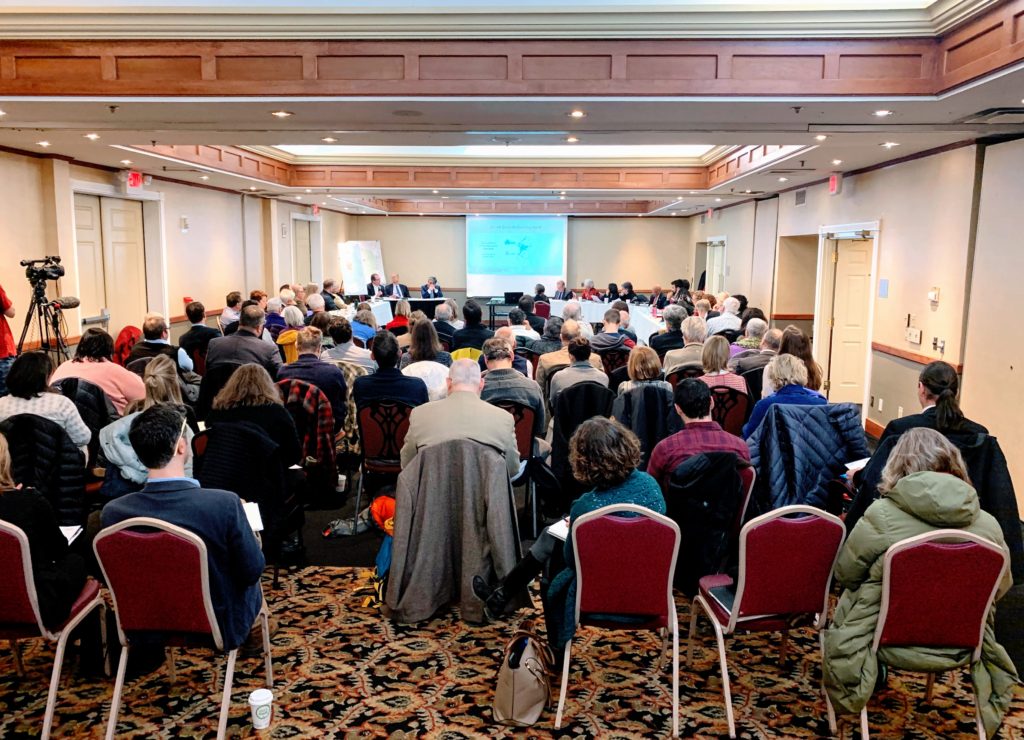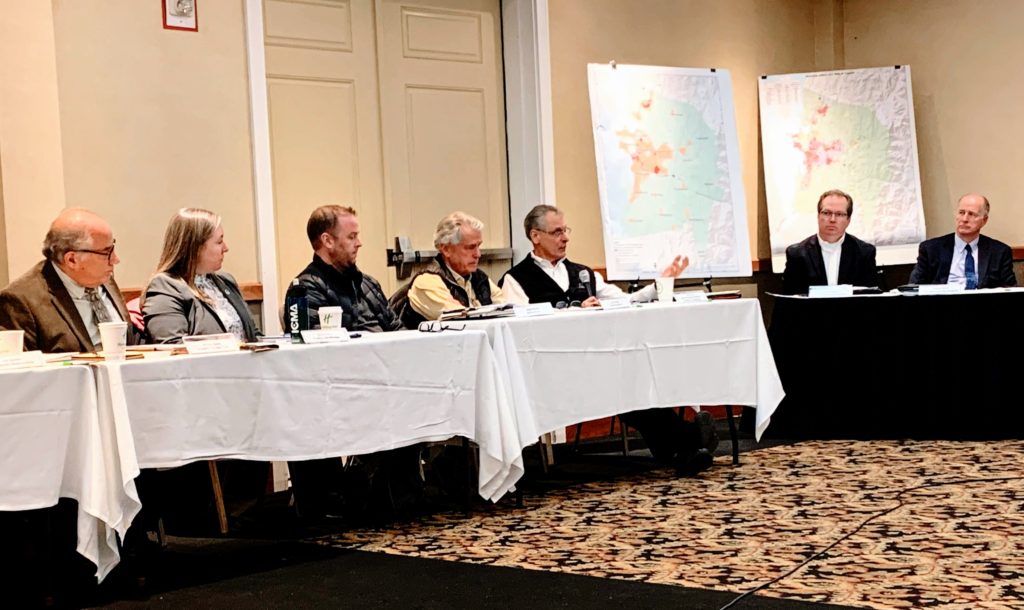Vermonters filled the room at the Economic Development, Housing and General Affairs Senate Committee meeting held at the Holiday Inn in South Burlington earlier this month. It was the fifth and final stop of a series of regional housing discussions intended to bring new housing stakeholders to the table as the Vermont legislature considers housing policy for 2020.
Panelists included representatives from Cathedral Square, Vermont Housing Finance Agency (VHFA), Housing Vermont, CVOEO‘s own Mobile Home Program / Vermont Tenants, city managers from Williston, Winooski, and Burlington, and developers like Redstone and Farrell Properties to name a few.
Big takeaways? Double permitting processes in downtown areas stall the development we need, and our inability to meet the housing demand in Chittenden County is contributing to the rising gap between our most affluent and lowest income communities.
“This is gentrification.”
Winooski City Manager Jessie Baker spoke about how Act 250 requirements mean that the city can’t control when construction workers can be on site (state permitting requires activity to happen during daylight hours, but downtown Winooski traffic makes that impossible) and projects have been severely delayed for requirements as minor as signage. Stalling these projects, intended to meet the rising demand for affordable housing in Winooski, has resulted in an increase of low- and high-income residents with a shrinking group of middle earners. “This is gentrification,” Baker said.
Union Bank’s Kelly Deforge brought the concerns of gentrification to the full Chittenden County context. As the Senior Mortgage Loan Officer at Union Bank, Deforge meets with potential homebuyers who are overwhelmed by the median price of home at $336, 000. Just to get in the door, first-time homebuyers need $25,000 in down payment funds with monthly payments of $2,200 or more a month, and that is not factoring outside costs of childcare or travel, both of which go up dramatically as folks buy farther and farther from their places of work. Deforge says there is little opportunity to transition from renting to buying in Chittenden County.
“It’s an educational process around what affordable housing is.”
By and large, the major frustration voiced by housing developers and city planners was over the permitting process which acts as a barrier to building housing quick enough. With all this talk of removing obstacles to building housing, though, the danger becomes losing the objective of making more affordable housing. Developer Eric Farrell, who has partnered with Champlain Housing Trust and Cathedral Square to create affordable communities across Chittenden County, touched on the NIMBYism that often follows new affordable developments. “It’s crazy talk,” he said, going on to say that these new tenants are the people you see in your businesses and around the community. “It’s an educational process around what affordable housing is,” he said, adding that creating middle income housing frees up more affordable units.
“If we lose commitment to affordability, we risk [further] gentrification.”
Cindy Reid, Director of Development for Cathedral Square, quickly responded, “If we lose commitment to affordability, we risk [further] gentrification,” citing the 200+ person waitlist for the 70-unit Juniper House still being constructed in Burlington, and reminding listeners that seniors in Vermont face highest rate of financial insecurity in nation. Reid and Michael Monte of Champlain Housing Trust both emphasized the urgent need for permanently affordable housing. Monte added that CHT currently has 2,500 people are on the waitlist for 300 units. There is no guarantee that building middle-income housing will free up units for those in Chittenden County already waiting for affordable housing.
Reid also referred to last year’s acclaimed Housing Revenue Bond, which made possible the construction of the new Juniper House as part of the Cambrian Rise development. Most of the housing advocates at the table seemed to agree a second Housing Revenue Both is in need. In an unexpected moment in the discussion, both Vermont State Employees Credit Union and Union Bank said they not only support a second Housing Revenue Bond, they want the opportunity to buy more of it this time.
“People don’t mind living small, but they don’t want to live crappy.”
The local meeting location afforded a seat at the table to representatives of the busines community, including Burton‘s Senior Vice President, Justin Worthly. Worthly voiced concerns over the lack of quality housing available for his employees and poor internet coverage in rural communities for those who end up having to live farther away and work remotely. “People don’t mind living small, but they don’t want to live crappy,” responded developer Eric Farrell, who went on to advocate for higher density in housing developments, and building near public infrastructure that gets people out of their cars such as bike paths and bus routes.
“Safety, access, and diversity in housing options is key,” asserted CVOEO’s own Sandrine Kibuey, who went on to remind listeners of the 24 mobile home parks in Chittenden County with 35 vacancies, which are hard to fill because of the stigma around these communities. “We are champions at crisis management,” she said, but advocated for a stronger effort in prevention and that requires capital and collaboration.


